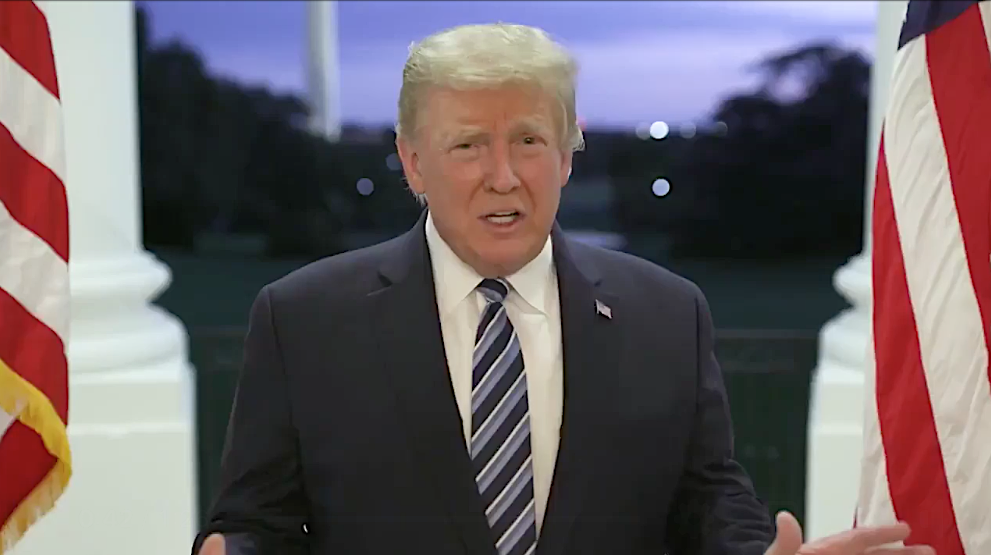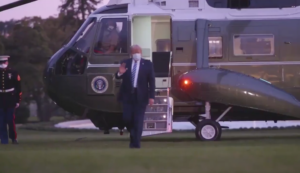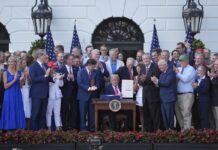
WASHINGTON—President Donald Trump on Monday night departed Walter Reed National Military Hospital, where he had been treated for COVID-19, and arrived at the White House via the Marine One helicopter a short time later.
According to the press pool, Trump emerged from Walter Reed and briefly stopped at the top of the hospital steps before walking past reporters. “Thank you very much everybody,” he said, ignoring shouted questions and giving a wave.
At the White House, he mounted the steps to a balcony, discarded a white mask he was wearing and faced the helicopter as it lifted off, saluting. Still maskless, he turned and went into the residence.
Masks are advised for use to prevent the contagious virus from spreading to others. Trump is continuing treatment at the White House.

Earlier, Trump had announced his plans on social media.“Don’t be afraid of Covid. Don’t let it dominate your life,” Trump tweeted from his suite at the hospital in suburban Maryland. “We have developed, under the Trump Administration, some really great drugs & knowledge. I feel better than I did 20 years ago!”
Trump also said he plans to return to campaigning, despite his infection. “Will be back on the Campaign Trail soon!!!!” he tweeted.
The president’s departure from Walter Reed followed a weekend in which his doctors and top staffers offered conflicting messages on his condition. On Saturday, Trump’s physician, Dr. Sean P. Conley, offered a rosy assessment of Trump showing improvements, while the president’s chief of staff Mark Meadows presented a starker outlook immediately after that briefing.
Before and during his hospital stay, Trump received several experimental treatments, including the antiviral drug remdesivir and dexamethasone, typically used in severe COVID-19 cases.
His doctors did confirm that he received supplemental oxygen at times and that his blood oxygen levels dropped at least twice since he tweeted about his diagnosis early Friday morning.
By Sunday evening, Trump and his security detail loaded into SUVs, so the president—who was wearing a cloth face mask—could wave to supporters gathered outside the hospital.

Speaking to reporters shortly after the president’s tweet about returning to the White House, Conley described Trump as “up and back to his old self, predominantly.” Conley declined to disclose certain details, including specifics of what the president’s lung scans showed, citing federal health confidentiality laws.
Conley also did not elaborate on any plans for how the president would quarantine at home, including whether he would remain in the residence instead of using the Oval Office, or other details about how the administration planned to safeguard the health of the many staffers who work at the White House.
He said that with any hospital patient, the goal is to return them home as soon as possible.
“Right now, there’s nothing that’s being done upstairs here that we can’t safely conduct” at the White House, Conley said.
Conley declined to give a date for when the president could travel again, saying that doctors will continue monitoring his virus levels.
Asked about the seven-to-10-day window he had stated as the most critical for COVID-19 patients, which is yet to come, Conley acknowledged they are in “uncharted territory” when it comes to the experimental treatments that Trump has received, and that he’ll remain under close observation through the weekend.
“If we can get through to Monday with him remaining the same or improving, better yet, then we will all take that final deep sigh of relief,” Conley said.
This article appears in partnership with Georgia Recorder






